Gwaneum-jeon – Hall of Avalokitesvara: 관음전
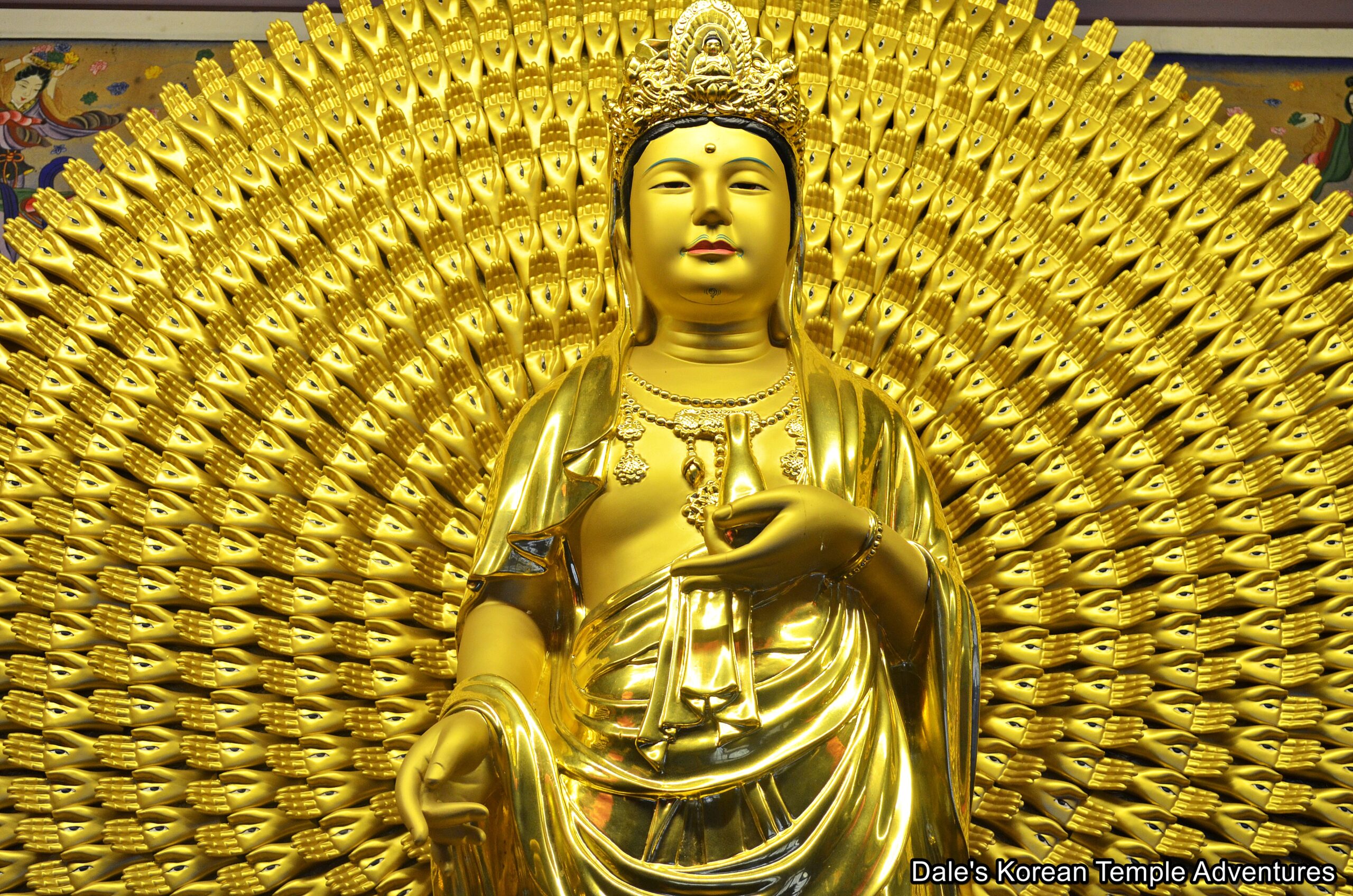
Introduction
Perhaps the most popular shrine hall at a Korean temple, outside the Daeung-jeon main hall, is the Gwaneum-jeon Hall. The Gwaneum-jeon Hall is a hall dedicated to Gwanseeum-bosal (The Bodhisattva of Compassion). Compassion, in this sense, is often associated in Korean Buddhism with the unconditional love of a mother. This hall is typically packed with worshipers all hours of the day and days of the week.
Gwaneum-jeon Design
Gwanseeum-bosal means “the hearer of cries,” in English. Gwanseeum-bosal was born from a ray of light emanating from Amita-bul’s right eye. As a result of her origins, Gwanseeum-bosal is closely associated with Amita-bul (The Buddha of the Western Paradise). In fact, Gwanseeum-bosal is thought to be the Bodhisattva incarnation of Amita-bul, and so she’s often situated to the left of Amita-bul in Korean Buddhist temples as an aid that brings enlightenment (a freedom from suffering) to all sentient beings.
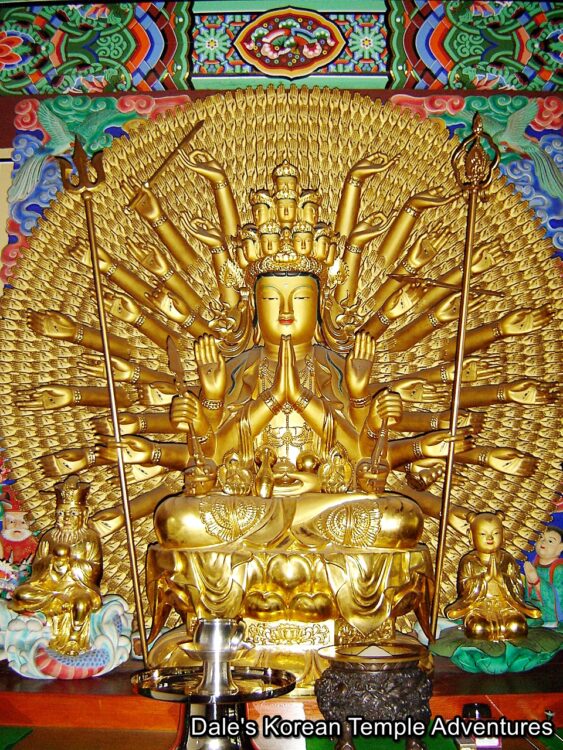
As for Gwanseeum-bosal’s appearance, she’s one of the easier figures to identify in Korean Buddhism for a couple of reasons. The first is the very sex of Gwanseeum-bosal. In India, Gwanseeum-bosal is male; however, in Korea, she closely resembles a female, even though in some statues and paintings Gwanseeum-bosal sports a moustache. The reason for this change came with the migration of Buddhism eastwards, where emotions like compassion and mercy are generally thought to be feminine traits. Another easy way to identify Gwanseeum-bosal is that she usually wears a large and regal-looking golden crown with an image of Amita-bul squarely in the centre of the crown. This is a sign of the emanation of Amita-bul’s wisdom.
But perhaps the most common representation of Gwanseeum-bosal, at least in Korea, is the one where she has a thousand hands and eyes. These hands and eyes are used to reach out to those in need of help. In addition to these hands and eyes, Gwanseeum-bosal can also have nine or eleven heads, which represents her all-knowing understanding and acceptance of nature. In her eleven-headed incarnation, the three heads to the left signify anger, while the three to the right have a serene smile. The three heads to the back bear an expression of compassion, while the largest one to the front exudes a balance of serenity. The eleventh, and final, head at the very back is laughing, which is a sign of her wisdom.
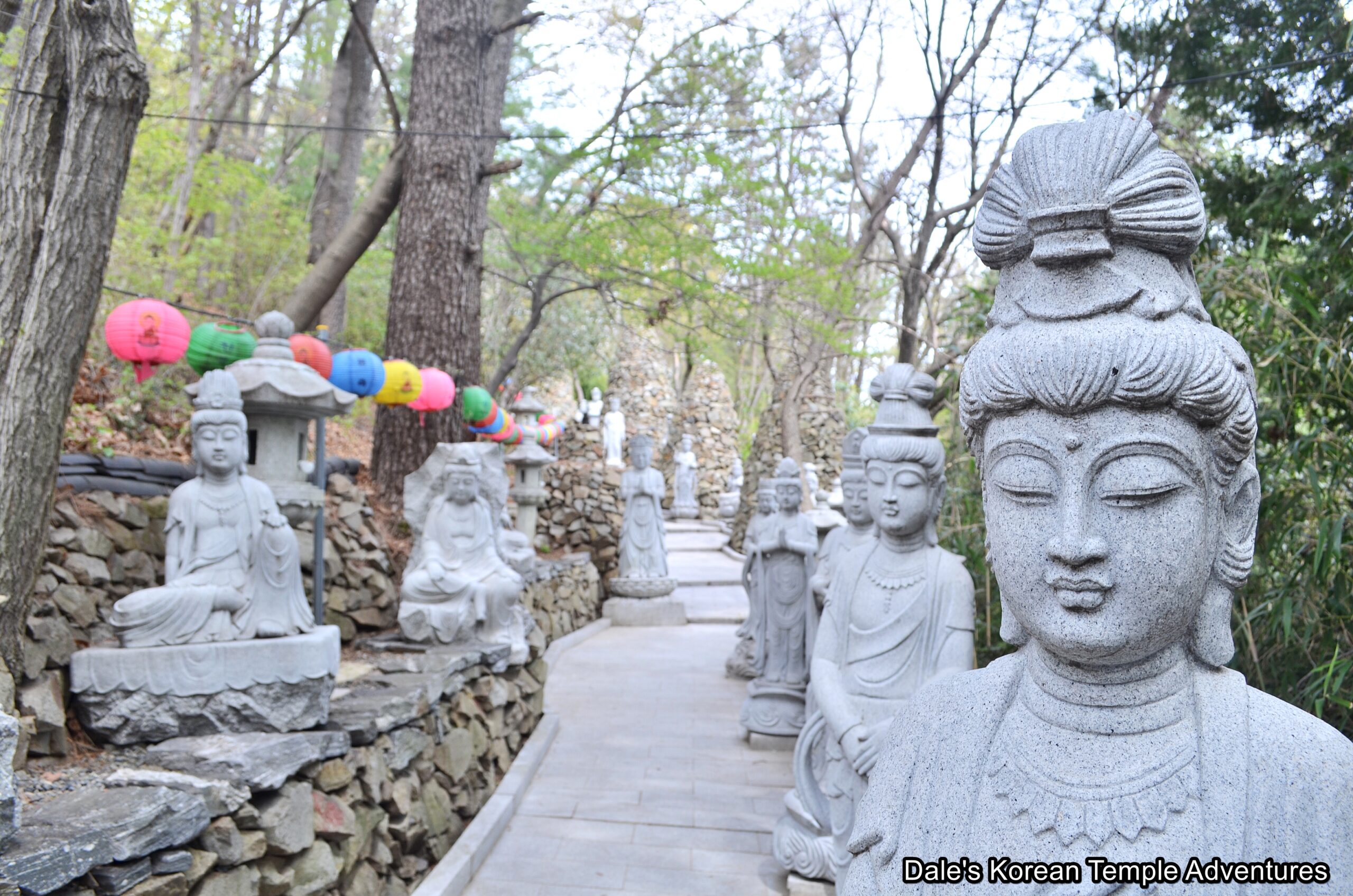
However, Gwanseeum-bosal can also be depicted in 33 different forms. These 33 different forms exist so as to help save sentient beings from their different needs. With this in mind, other ways Gwanseeum-bosal can appear is either seated or standing. She can also be holding any number of objects in her hands. One such object is a bottle. This bottle is said to be filled with ambrosia for quenching the thirst of sentient beings, while also washing away their troubles. And in her other hand she can hold a willow spray. This willow spray represents her ability to sprinkle “sweet dew” on the needy. The willow, which has long been considered to have medicinal purposes, also symbolizes her role as a healer. As for paintings, Gwanseeum-bosal is often depicted near water alongside Yongwang (The Dragon King). This depiction suggests her closeness to her paradise. In paintings, Gwanseeum-bosal is often wearing white clothes. In addition to her white clothing, she’s often wearing jewelry and a regal crown.
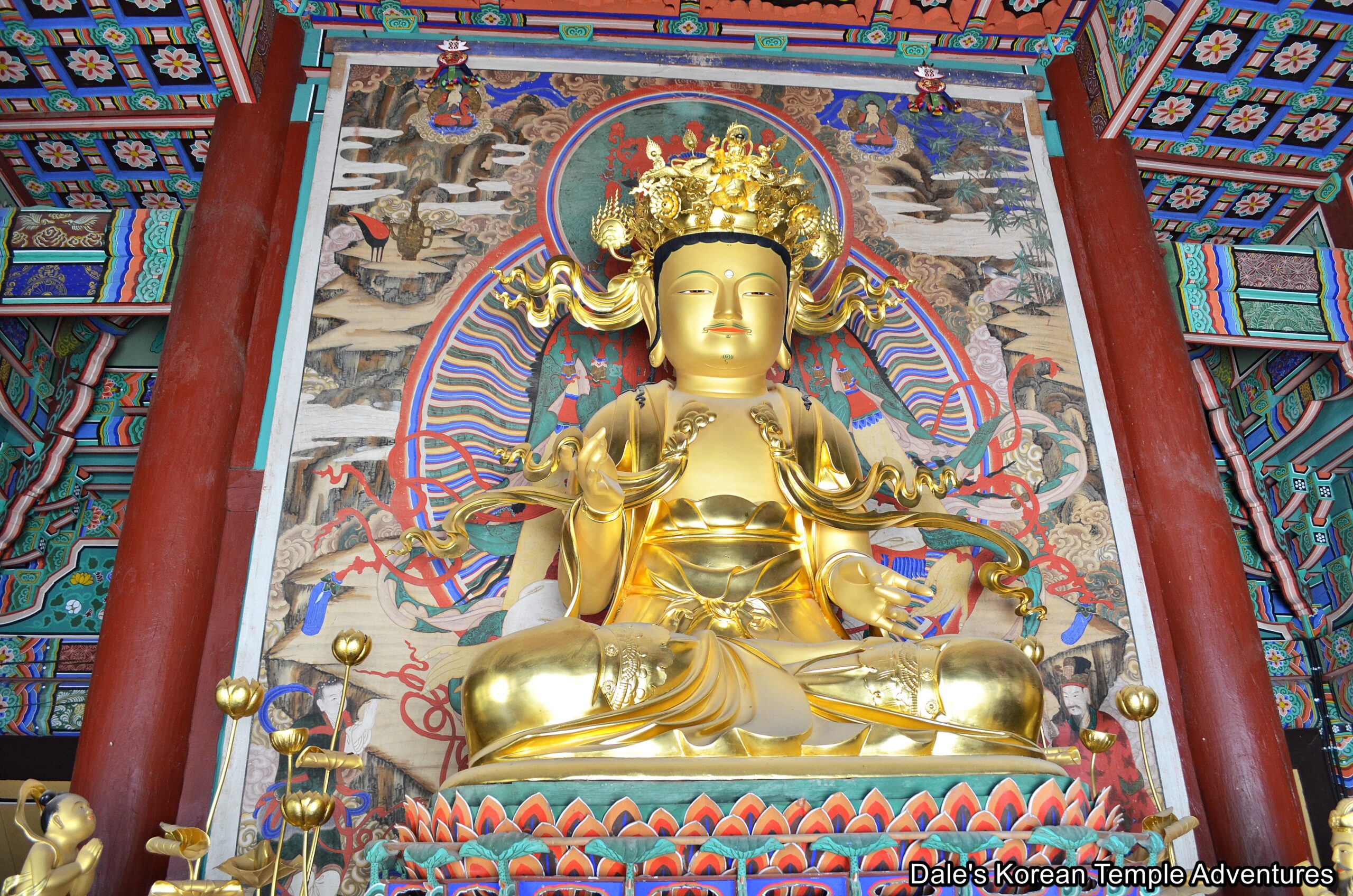
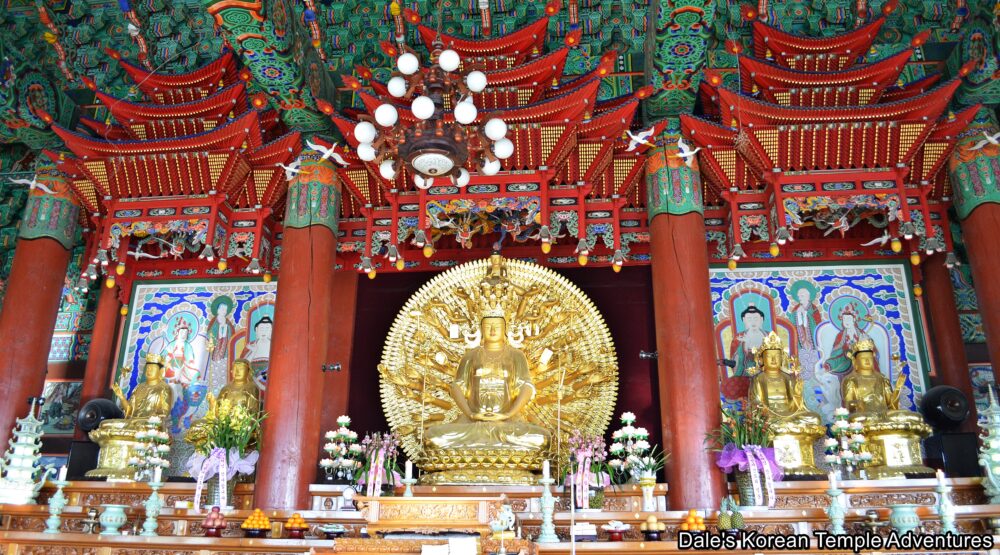
In temples where Gwanseeum-bosal is the central image inside the main hall, the main hall is called a Wontong-jeon. Wontong-jeon means “Passing Through with Ease,” in English. This refers to the idea that Gwanseeum-bosal has the power to get by any difficulty, so a person should pray for her blessings. Specifically, she can be found in Wontong-jeon Halls at Haeunjeongsa Temple in Busan, or Beopjusa Temple in Boeun-gun, Chungcheongbuk-do.
Great Examples
Because of her popularity, Gwanseeum-bosal often appears throughout temples as a statue. Great examples of this can be seen at Naksansa Temple in Yangyang, Gangwon-do, Haedong Yonggungsa Temple in eastern Busan, and the multi-armed and headed Gwanseeum-bosal at Girimsa Temple in Gyeongju.
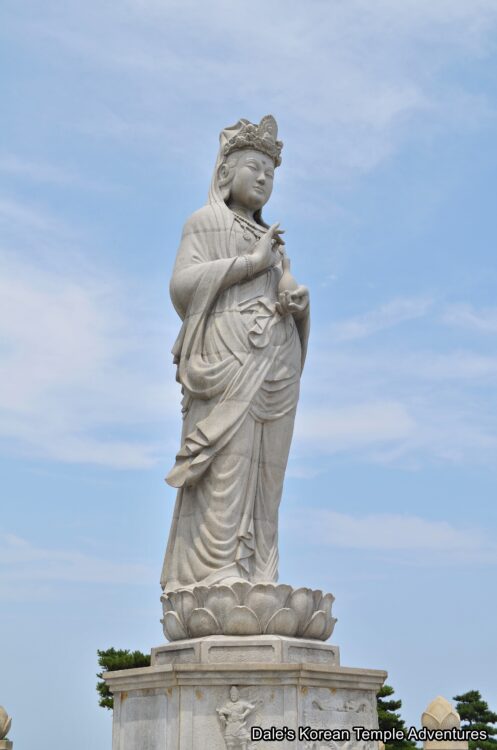
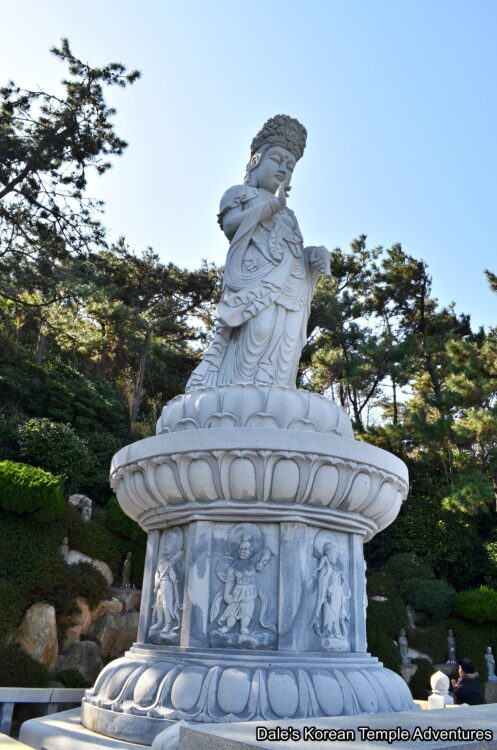
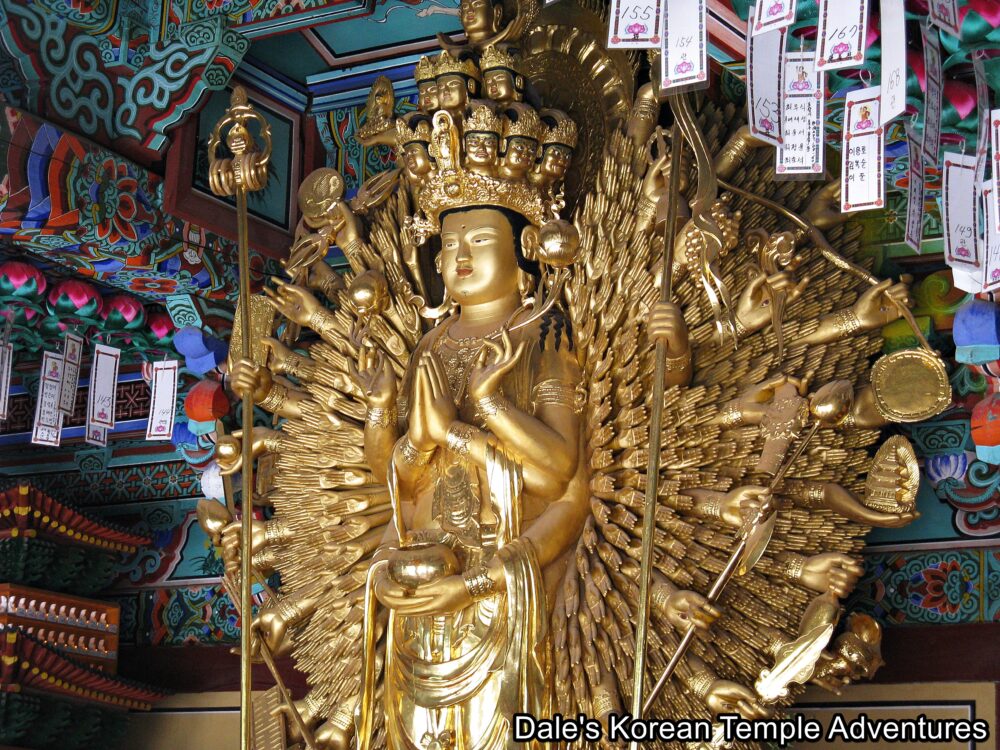
Conclusion
So the next time you’re at a Korean Buddhist temple, have a look for this ornate figure. Gwanseeum-bosal is probably easy to find because the Gwaneum-jeon Hall, where she is typically housed, is well-attended by devotees.